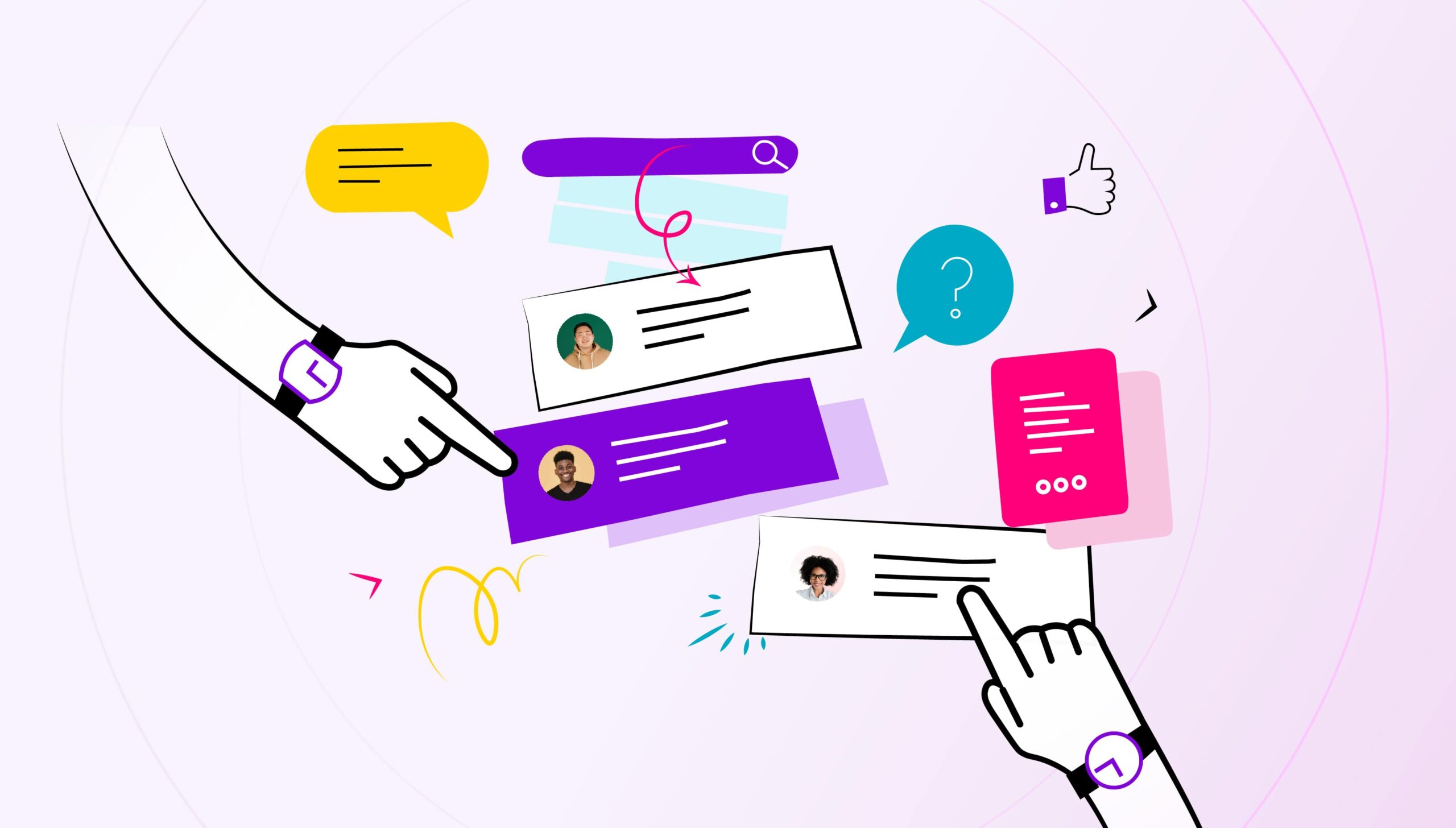Offboarding an employee is a very sensitive process.
One bad review of company culture can cloud your organization’s reputation. While HR invests significant effort in creating a pleasant onboarding experience, the offboarding process often receives less attention. A thorough and considerate offboarding process is crucial when it comes time to part ways with an employee. This ensures a smooth transition for both parties and transfers the employee’s knowledge and experience to his team members.
In this post, we’ll cover the essential employee offboarding process, how to build a comprehensive offboarding checklist, and share best practices for success.
Let’s dive in!
Why Is the Offboarding Process Crucial?
You wouldn’t like it to be in the bad books of your former employee. Hence, the offboarding process is ensured to be smooth, secure, and professional. Here’s why it should be your priority.
1. Your Former Employees Are Ambassadors
Some employees become family, and leaving them behind is difficult. They create several moments with your organization that are remembered or discussed with every new hire. Make sure to bid them adieu nicely, as they speak highly of the ex-employer in their place of work. It adds up to your employer brand. 75% of job seekers consider an employer’s brand before even applying for a job.
So, offboarding becomes important as it reflects your next phase of hiring.
2. Keep the door open for former employees
When you offboard the employee on good terms, there is a high chance that in the future, they will think of working with you again. They’re likely to be a culture fit for your organization, so you don’t need to handhold a lot. Plus, it’s cost-effective and productive.
3. Ensure Smooth Knowledge Transfer
A proper offboarding process helps in the smooth transfer of knowledge and responsibilities. It ensures that the departing employee’s knowledge and insights are passed on to their successors, minimizing disruptions and maintaining continuity in operations.
The best way to share knowledge is through knowledge-sharing tools like Document360, which allow people to access knowledge internally and collaborate easily. These tools can also store important documents and build a knowledge database.
Here’s what our customers say, We are using Document360 not just for internal optimization of content for talent management and product release management, but also have expanded the use case to customer-facing training and support which has elevated our customer success initiatives and strategy. Document360 has optimized the process of knowledge transfer within the organization, and improved speed and efficiency across all departments.
Source: Gartner reviews
4. Protect Sensitive Information
A thorough offboarding process helps in protecting sensitive information. Ensuring that all access to company data and systems is revoked and retrieving company property reduces the risk of data breaches or misuse of confidential information. 76% of IT leaders say, “Offboarding is a Significant Security Threat.” To combat risks from offboarding, it’s necessary to establish effective protocols, extract relevant information about application usability, and take action.
Pro tip: Leverage automation to reduce the breeding ground for minor errors while closing SaaS accounts, revoking passwords, updating system ownership, and other tasks.
Steps to Create an Offboarding Procedure
Your offboarding process starts with taking a deep breath because separation is hard, whether for employees or employers. Start the offboarding documentation with these key pointers.
1. Identify Key Stakeholders
First, ensure all stakeholders involved in the offboarding process are aligned and understand the necessary steps for parting ways with the employee. Communicate the specific tasks and information you need from each stakeholder to facilitate the employee’s release. For example, if a departing employee has taken an emergency loan, involve the payroll department to calculate and prepare the exact settlement amount, ensuring a smooth and accurate final payout.
This includes HR, IT staff, managers, and any other relevant departments. Ensuring everyone knows that everyone is aware of their roles and responsibilities will facilitate a smooth and efficient offboarding process.
2. Develop a Checklist
Create an offboarding checklist in a centralized document that you can easily access whenever an employee leaves the company. Siloed information can increase the chance of a missed step and become a barrier to employee satisfaction and collaboration.
As per eGain’s survey, 36% of CEOs manage knowledge using three or more tools to store information for employee offboarding.
Here, we’ve created an employee offboarding checklist template that is easily adaptable to your organization’s needs.
|
Category |
Task |
|
Notice and Confirmation |
|
|
Knowledge Transfer |
|
|
Exit Interview |
|
|
Administrative and Legal |
|
|
Compliance |
|
|
Outplacement Support |
|
3. Communicate Offboarding Expectations
When an employee resigns, HR should send an email outlining the timeline, actions required from the employee, and the responsibilities of the IT and payroll departments. This transparency reduces confusion and ensures a smooth transition.
Managers should promptly inform their team, department, and HR about the employee’s departure.
4. Create Exit Interview Forms
The only time you can take employee feedback on their experience working with your organization. You can collect feedback and work on them for future employees. However, the most important thing is to include the right questions in the form to get the answers you want. Ask questions about👍
- The reason behind leaving the company
- Experience working with the manager
- References for replacement & skillset required
- What part of the job was the most favorite?
- One thing you want to change in the culture
- What is the best thing you like about the company culture?
- Did you receive On-the-job training to smooth your transition?
All these questions will help you understand their experiences, thoughts, feelings, and criticism during their organizational tenure.
5. Establish Knowledge Transfer Procedures
You never know when knowledge from a former employee might become useful, even a year later. Therefore, it’s crucial to store the knowledge transfer within the company. Ensure you document their daily activities, priority tasks, access to documents and system files, and any handover details for freelancers or contractors they’re working with.
Creating a separate file or video that explains the best practices they follow for specific tasks is a great idea. This makes it easier for their successor to take over their responsibilities quickly.
Creating Knowledge transfer documentation involves ongoing projects, key milestones deadlines, etc. A detailed process manual on critical tasks, and how-to guides to ensure smooth transitions without disturbing operational efficiency. Utilizing online documentation tools like Document360 will ease the process and ensure easy access for teams.
6. Ensure Privacy and Confidentiality
Security is the foremost factor while offboarding employees. It shouldn’t be missed at any cost; otherwise, it can cost you billions. A report by Biscom stated that 87% of employees who leave a job take their data with them, and 28% take that created by others. 87% of them who took the company’s data with them took corporate presentations and strategy documents. 31% took customer lists, and 25% took intellectual property. This leakage of data can threaten your organization.
It’s advised to take security control very seriously to avoid being prevented in such cases. Few things you can do to strengthen your privacy:
- Disable the former employee account from your SSO, as mission-critical systems are protected behind it.
- Closing former employees’ SaaS accounts also helps to enhance security and compliance and saves costs.
Also Read: Transforming Policy and Procedure Documentation: 3 Success Stories with Document360
3 Best practices for a successful offboarding process
Every team member should be present during offboarding employees at the time of departure. Make sure your employees feel respected and not abandoned while leaving. Create an effective process as you did on onboarding the employee and give them the best last days of their working with the organization.
1. Regularly Update Your Offboarding Checklist
Every organization should keep updating its policy and procedures, and based on that, make sure you are updating the offboarding checklist.
2. Documentation Retention and Archiving
As an HR department employee, you can extract documents like exit interviews, final settlements, and knowledge transfer records anytime. You can conveniently save your important documents in one place. They are available whenever needed
3. Technology Access Revocation
49% of companies lost at least 5% of corporate-issued assets during offboarding. This shows how important it is for companies to secure their IT environments. Efforts on offboarding are compounded due to increasing technology footprints. SaaS and cloud adoption have increased; hence, de-provisioning access to cloud infrastructure cloud networks by revoking access with management tools, within SSO tools, or directly from the application is important.
Wrapping Up
Using KMS software, create employee offboarding documentation like exit policies, training and handover plans, legal compliance checklists, and other important documents. This will improve your HR productivity and the transition of employees leaving the company.
Document360 helps foster employee communication, align the employee with departure steps, and automate workflows. Suppose you’re done with silos documentation and looking to improve your employee experiences. In that case, this is the opportunity for forward-thinking businesses to invest in cutting-edge areas such as document management, content management, AI-enabled conversational, and process guidance to stand out from the pack in operational performance while delivering great employee experiences.
An intuitive knowledge base software to easily add your content and integrate it with any application. Give Document360 a try!
GET STARTED



 –
– 

